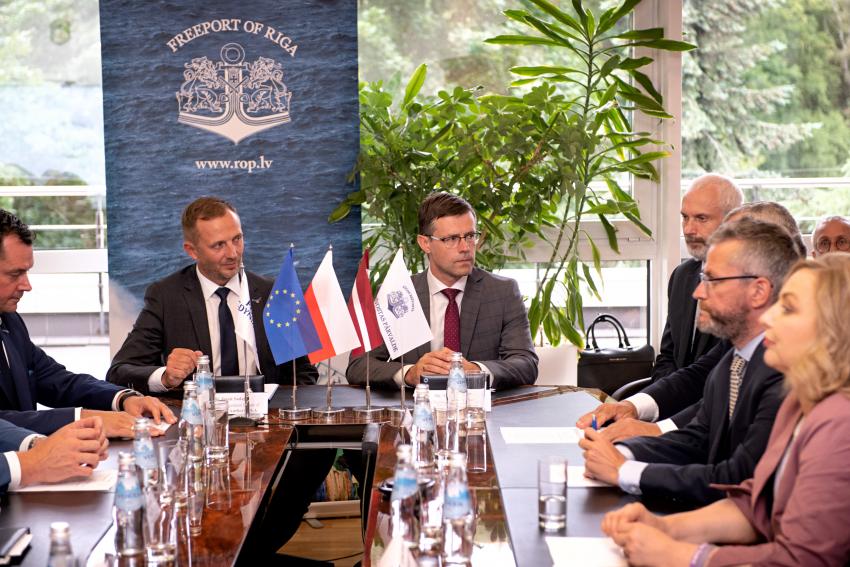On July 26 of this year, Polish Minister of Infrastructure Andrzej Adamczyk and his accompanying delegation of businesspeople, including the managers of the Gdynia Port Authority, paid a working visit to the Port of Riga. In the framework of the visit, the Polish delegation met with the management of the Freeport of Riga to discuss cooperation issues between the two ports. As part of the working meeting, Mr. Viesturs Zeps, the Chairman of the Freeport of Riga Board, and Mr. Jacek Sadaj, the Chairman of the Port of Gdynia Board, signed a Memorandum of Intent, with the aim to strengthen and develop the cooperation between the two ports, as well as to process and handle at least 5 million tons of coal cargo in the port of Riga by the end of this year.
Considering the unstable situation in the global energy market, disruptions in the freight supply chains, as well as the spare cargo handling and storage capacities of the ports of Riga and Gdynia, the port managers have committed to cooperate within the framework of 2022 by facilitating cargo handling, storage, and sorting processes.
“We highly appreciate this initiative of cooperation with our Polish colleagues and the Port of Gdynia. Strengthening cooperation with reliable business partners will provide benefits to both parties and will help to overcome the challenges imposed by global uncertainty more easily and efficiently. Within the framework of the Memorandum, we have set a goal to handle several million tons of coal in the port of Riga by the end of this year. Our advantage is the modern and multi-functional Krievu Island terminal – its spare capacity provides the opportunity to efficiently process impressive volumes of cargo," said Viesturs Zeps, the Chairman of the Freeport of Riga Board.
The multi-functional Krievu Island terminal was put into operation at the end of 2018. The terminal's coal handling, crushing, transportation and storage infrastructure is one of the most up-to-date and environmentally friendly in the Baltic region. At the Krievu Island terminal coal handling is organized in a closed facility with an automated car dumper system. A closed conveyor line is used to transport coal to and from ships. In order to reduce the dust formation in the open coal storage areas, the coal is regularly watered, or snow cannons are used depending on the season. The 23-meter-high dust fence efficiently prevents the spread of coal dust into the environment. For this purpose, an air quality monitoring station is located in the Krievu Island.
 English
English























